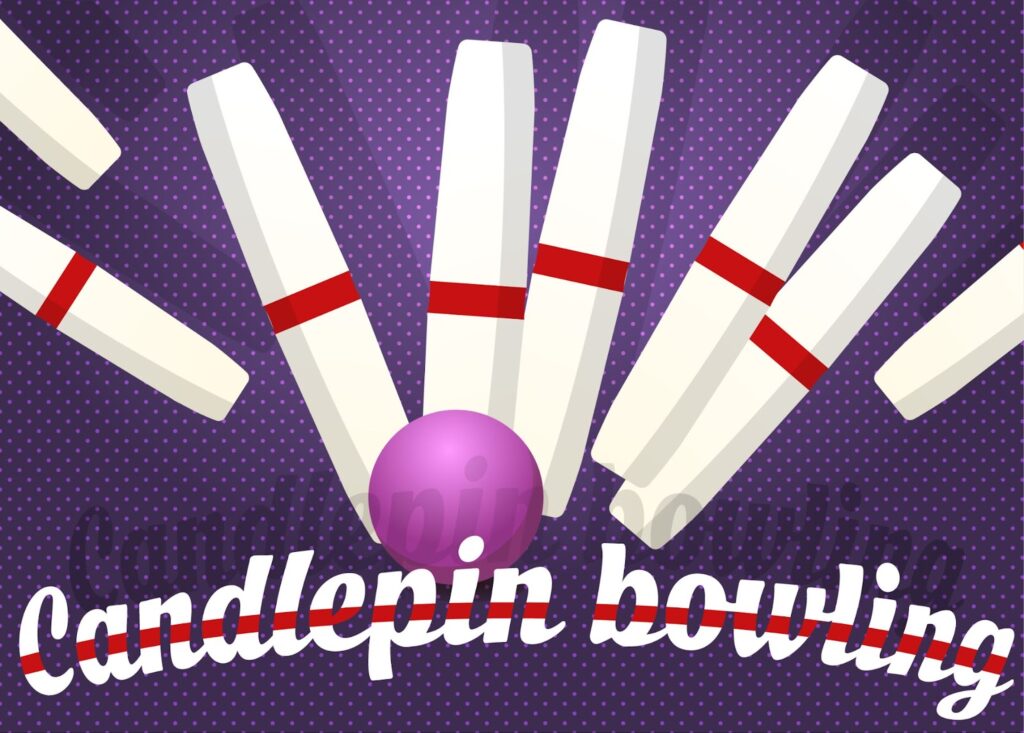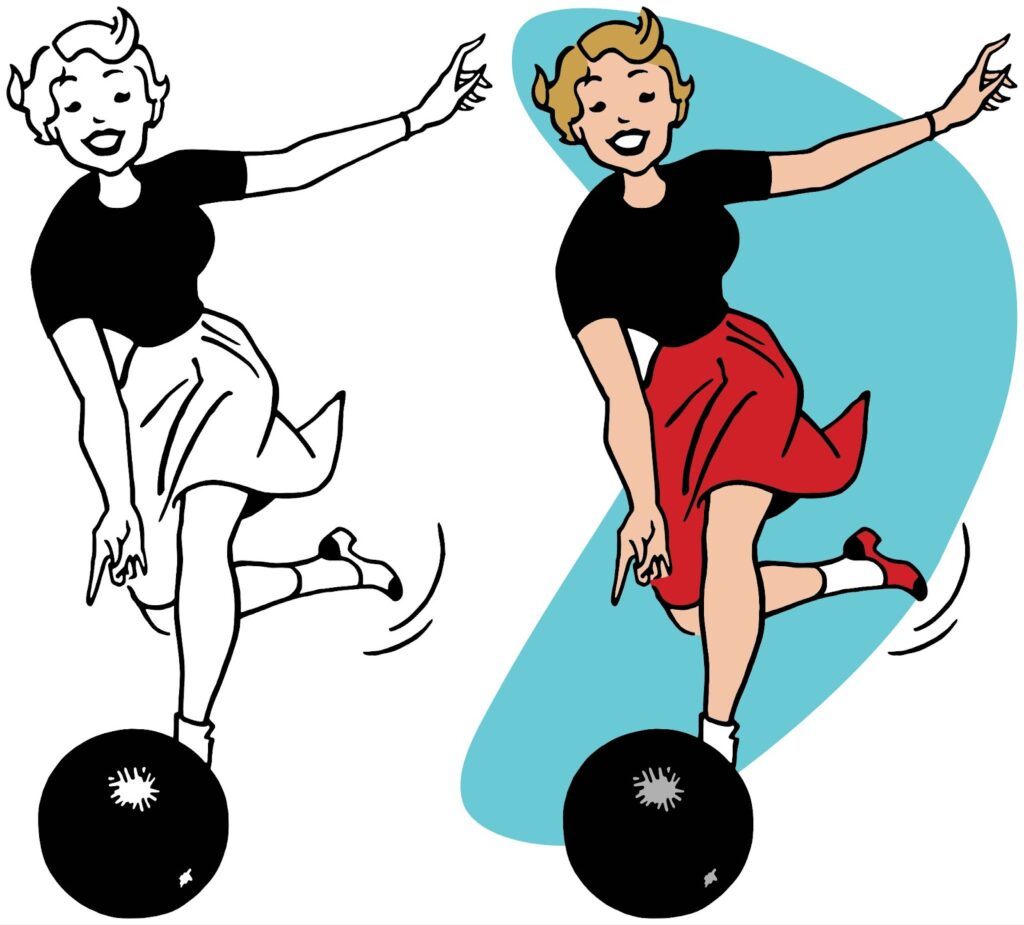You may have through that traditional ten-pin bowling is the only kind of bowling, but there is a whole new world you haven’t seen yet: duckpin bowling vs candlepin bowling.
While you may think that all forms of bowling involve knocking down pins with a ball, these two variations have their own unique twists that will leave you spinning (literally).
These two games may seem similar on the surface, but don’t be fooled – they are as different as night and day.
So grab your bowling shoes and get ready for a showdown as we dive into the world of duckpin bowling vs candlepin bowling.

History: The Origins Of Duckpin And Candlepin Bowling
Duckpin bowling and candlepin bowling, though often lumped together as variations of the traditional ten-pin game, actually have distinct origins that contribute to their unique playing styles and charm.
Bowling Duckpins
The smaller pins used in duckpin are comparable to candles in size but lack the familiar taper shape.
This alteration created an unpredictable rolling pattern that required precision and skill from bowlers.

Candlepin
Candlepin bowling, on the other hand, was born out of European influence and regional adaptation.
It is believed that early English settlers brought their love for quoits – a game similar to horseshoes – with them to New England.
Over time, this evolved into candlepins, where cylindrical wooden pins were used instead of horseshoes or iron stakes.
Combining elements from quoits and German nine-pin scoring systems, candlepin became a distinctively New England pastime known for its tricky pin layout and small ball size.

Can’t Go Wrong With Either!
While both variations share similarities, such as using balls without finger holes and favoring precise shots over brute force, they differ in pin arrangements (10 pins in duckpin vs 15 pins in candlepin) as well as scoring rules unique to each game.
Each style offers its own challenges and opportunities for mastery, making them beloved by aficionados seeking something beyond regular ten-pin bowling lanes.
Equipment: Differences In Ball Size And Pins
Due to their smaller size, the balls used in duckpin bowling are also much smaller and have no finger holes.
This requires bowlers to rely more on finesse and accuracy rather than sheer power.
Unlike duckpins which have a cylindrical shape with a flat top surface, candlepins resemble tall candles with thin ends.
Similarly to duckpin bowling, there are no finger holes in the small balls used for candlepin games.
With these slender pins combined with lightweight balls that require minimal strength to throw accurately.
Players must focus heavily on precision rather than knocking down each pin forcefully.

Both duckpin and candlepin bowling offer unique challenges not found in traditional ten-pin games.
They require different techniques due to the variation in ball size and pin shape – providing alternative experiences for avid bowlers seeking something new or looking to improve their skills within different environments
Scoring: Duckpin
Scoring in duckpin bowling may seem like a simple task, but it is far more complex than meets the eye.
Unlike traditional ten-pin bowling, where each pin knocked down counts as one point, duckpin scoring has its own unique system.

Each player gets three rolls per frame and can earn up to nine points per frame.
Here’s where it gets interesting: if a player knocks down all ten pins with their first ball, they receive a score of ten plus the number of pins knocked down in their next two rolls.
This means that even after a perfect strike, there’s still room for improvement and strategy.
One new perspective on scoring in duckpin bowling is recognizing its elusive nature.
The game demands precision and finesse rather than sheer power, making it both challenging and rewarding for players of all skill levels.
It’s not just about knocking down as many pins as possible; calculating angles, controlling the ball’s speed, and strategizing which pins to target are crucial aspects that directly influence your score.
Moreover, this scoring system adds an exciting element of suspense to each frame.
While traditional bowling typically results in consistent scores from frame to frame for skilled players, duckpin participants could experience high variability based on their performance within a given frame.
This makes every roll an opportunity to rack up points or fall behind.
The potential for comebacks or sudden shifts in fortunes adds an extra layer of intrigue that keeps players engaged until the very last roll.

Scoring: Candlepin
When it comes to scoring in candlepin bowling, things work a little differently.
Unlike ten-pin bowling where you have 10 frames to play with, candlepin bowling gives players 10 boxes consisting of three rolls each.
This means that continued strikes or spares are crucial if you want to rack up those points!
One interesting aspect of scoring in candlepin bowling is that pins are not cleared between rolls.
As a result, pin-counting becomes essential as knocking down just two or three pins can make a significant difference.
Additionally, due to the smaller size and weight of the pins compared to ten-pin sets, strikes are rare in candlepin bowling.
Instead, players often focus on picking up spares and aiming for high pin counts on their first shot.
The combination of accuracy and consistency becomes key as you aim for optimal scores.
While scoring in candlepin bowling may seem confusing at first glance with its unique rules and techniques, it offers an exciting challenge for bowlers looking for something different from traditional ten-pin games.
With precise calculations needed after every roll and strategic decision-making throughout each frame or box, the game keeps players engaged and always striving for higher scores.
So next time you’re at the lanes trying your hand at this intriguing sport, remember the importance of pin counting and making consistent shots to excel at scoring in candlepin bowling!

Which Style Of Bowling Is Right For You?
We hope that this has been a helpful intro into the world of duckpin bowling vs candlepin bowling. 🙂
Duckpin bowling and candlepin bowling are two distinct variations of the classic sport that offer unique experiences for bowlers.
Duckpin bowling features smaller pins and balls, providing a challenge for precision and accuracy.
On the other hand, candlepin bowling requires finesse and strategy due to its taller, narrower pins and use of three balls per frame.
Both sports have their own loyal fan bases and can be enjoyed by people of all ages.
So whether you prefer the fast-paced excitement of duckpin or the strategic approach of candlepin, give both styles a try and see which one suits your bowling skills best.



